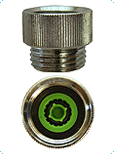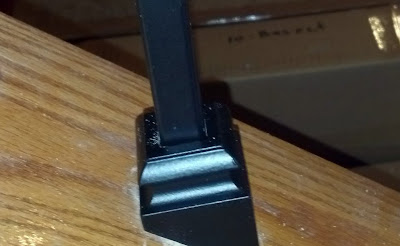 |
| ©2013 LineSafe |
The box installed by your phone/internet utility service (left side of pic) on the exterior of your home is as vulnerable as a sleeping baby. All it takes is one snip of the cable and your phone/internet are done and with that go the communication vehicle for your monitored alarm that most likely communicates through your phone/internet. Cellular alarm home monitoring service is available but few of us actually get it.
A product from the people over at LineSafe completely protects the box and the wire from below ground level as it enters the house and even has features that will set off your alarm if the box is tampered with...score!
 |
| ©2013 LineSafe |
From the LineSafe web site:
"If you think you are safe with a monitored home security system, then think again. Any criminal can beat your system with a $2 pair of wire cutters. LineSafe is a powerful and affordable watchman. It becomes an armored guard for your phone line and for your alarm system."
That says it all as far as Im concerned...on to the install...
For those without FIOS, you should simply be able to follow the instructions on the LineSafe site, but for those of us with the new huge Verizon FIOS (Optical Network Terminal) box which looks something like this, you will need to make some adjusting.
The first step will be to run a wire from an open zone on your alarm to the LS box. Your alarm company will gladly do this for you if you're not sure what it means. After thats done follow the instructions on the LS web site to connect it to your box.
To the Verizon box (not voiding anything):
1 - Remove the outer door. It is just held on with two plastic curved arms and one screw, just gently pry them off with a flat head screwdriver
To the LS box itself:
1 - The hinges of the FIOS box are a tiny bit too wide so we will need to shave off about 3/16" next to the LS mounting holes as well as a small portion on the bottom to give some clearance to the coaxial cables going into the house.
This can easily be done with a Dremel tool with a carbide bit, or even just contacting a local sheet metal/steel place and they can do all of this for you in about 30 min. with a plasma laser which will give you a smooth factory looking cut.
2 - One of the unfortunate compromises because of the depth of the FIOS box (5.5") is that we will lose the functionality of the second barrier door (which is only at 4.25") that if the criminals get the first door open, they will be faced with having to do it all over again while your alarm has already called the police from the first door being opened.
Simply unlock, remove and set aside.
Now we need to disable the pressure switch for the inner door. The switch has two clips on the back holding it in, that if simply squeezed will come free. Remove the two wire connectors from the switch, snip the connectors from the wire, expose about 1/4" of wire and attach those two wires together closing the circuit, wrap with electrical tape and tuck
Even if the criminals see this connection and cut it, that will set off the alarm as well :)
3 - Reposition white component, this is held on with double sided tape and just needs to be moved over to the side of the black wire terminal block to gain some clearance.
4 - Cover the raw edges of the cutout on the bottom side. We found some foam, and this will serve to protect the wires from chafing against the cut box. Not that it should ever move.
OK now, you can test mount onto the wall. You will need to place the right side first and then maneuver your FIOS hinges inside your side cutouts. There may be wires that are rigid and difficult to move but you have to make sure that they are all protected by the box.
Warning: The FI-O in FIOS means Fiber Optic which is light transmission and light beams in a straight line, that means that your black fiber optic cable cannot be bent in any hard angles. It can be coaxed to go where you want but dont bend it!
In addition, we assume no liability with any of the instructions provided, these are basic tips for you to help secure your box. Each installation is different and will require some strategic planning. Be careful.
Test fit successful. Now refer to your LineSafe documentation to formally install...good luck!



















































